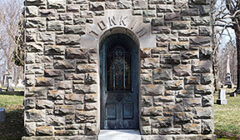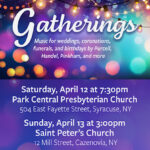The Girl in the Glass Coffin
The Girl in the Glass Coffin: The Tonkin Affairs by: Lee Ellen Hickey
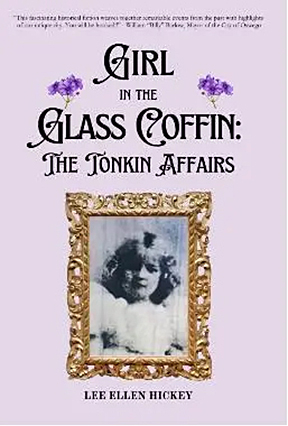 In the late 1800s, the Tonkin family of Oswego, New York – rich, privileged, high-society folks – embarked on a nightmare-like series of events that were the stuff of tragic fiction. They began with a riding accident involving the teen-aged son of the family, showing off for pretty young girls, resulting in the death of a working-class woman. While the event was, historically, unconnected to the other strange and bitter occurrences documented in this work, the writer has posed the questions what if, and why – and created a compelling piece of historic fiction based upon fact that truly keeps the pages turning as you follow the plot.
In the late 1800s, the Tonkin family of Oswego, New York – rich, privileged, high-society folks – embarked on a nightmare-like series of events that were the stuff of tragic fiction. They began with a riding accident involving the teen-aged son of the family, showing off for pretty young girls, resulting in the death of a working-class woman. While the event was, historically, unconnected to the other strange and bitter occurrences documented in this work, the writer has posed the questions what if, and why – and created a compelling piece of historic fiction based upon fact that truly keeps the pages turning as you follow the plot.
The bones of the story were gleaned from local history and lore: the wealthy Tonkin family had several children: Florence, Harold, Virginia and Rosamond. Harold inadvertently killed a woman as he rides somewhat recklessly, Virginia died of appendicitis, Florence suffered a broken engagement, Harold engaged in a number of scandalous relationships (and marriages) with show-girls, and Rosamond was hidden away as the family was plagued with blackmail letters threatening her life. Oh, and Mrs. Tonkin, the matriarch, refused to let her precious child be buried, but sealed her away in a glass coffin until a mausoleum could be built to allow her to inter her child in a proper fashion.
The writer has chosen to share with us both her research, and her speculation, as she unfolds the events much as an average Oswego citizen might have gathered them – by dates, incidents, and from what she could find as she researched the story in newspaper articles and historic resources.
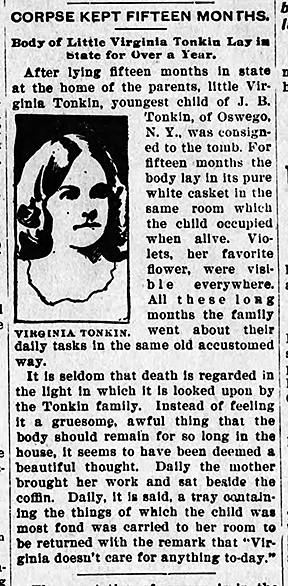
Her job, then, in fictionalizing the story, was to connect a series of indirectly related events; to imagine the motivating emotions and create the invisible conversations, encounters and quirks of personality that might have led from one real event to the next. How could one family have endured so many sad and devastating moments? Why would a young man engage in such self-destructive behavior, and a mother be so determined not to let a child go? What motivated two wealthy families (the Tonkins and their neighbors and erst-while good friends, the Condes) to cut one another so cruelly in their times of sorrow? And who and what was behind the blackmail attempt that tortured the Tonkin family by the beginning of the new century?
At a recent book talk at the Onondaga Historical Association (a real treasure of an organization for Syracuse and Onondaga County), writer Lee Ellen Hickey expanded on her work by sharing her goals, investigative techniques, and the background she uncovered as she explored the actual events that informed her novel. Was it merely “life” that crashed in upon the otherwise idyllic existence of Oswego’s leading (and wealthiest) family, or did they somehow author their own difficulties? Hickey provides some speculative motivations: Harold perhaps suffered from a form of traumatic guilt over the death of the woman he rides over in the street; a little girl’s doctors might have disputed a diagnosis and course of action to the point of waiting to take action and losing the child’s life; Virginia Tonkin might have doted on her namesake child to such an extent that she couldn’t look on her face in death and instead kept her “alive” in a glass coffin in the family home for more than a year. The events are on the record – the “story” is the product of a writer imagining the details.
H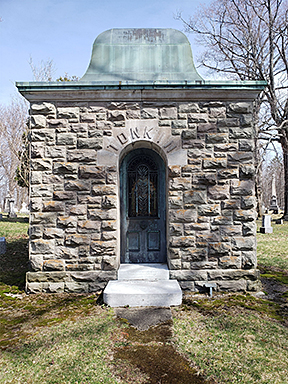 ickey shared with her audience at the talk photos not included in the book (though there are a generous number included to help the reader imagine the splendor in which the Tonkins and Condes lived), and she went into additional detail about the families, the size of their fortunes, and the manner of their lives as they encountered the Gilded Age in Oswego and New York City. Her presentation was staged with the doomed little girl’s favorite flower and color – violet – as a set dressing, and showed off a doll much like the one Hickey imagined the child might have played with, dressed, and loved. For this writer, the talk came at a perfect three-chapters-in moment in the book, as it provided context and additional visuals to intrigue the reader even more than the story already did.
ickey shared with her audience at the talk photos not included in the book (though there are a generous number included to help the reader imagine the splendor in which the Tonkins and Condes lived), and she went into additional detail about the families, the size of their fortunes, and the manner of their lives as they encountered the Gilded Age in Oswego and New York City. Her presentation was staged with the doomed little girl’s favorite flower and color – violet – as a set dressing, and showed off a doll much like the one Hickey imagined the child might have played with, dressed, and loved. For this writer, the talk came at a perfect three-chapters-in moment in the book, as it provided context and additional visuals to intrigue the reader even more than the story already did.
The book is a fascinating tale, dealt out in days, months, and characters in a compelling morality play. We meet the Tonkins, their friends the Condes, the women Harold woos and his best friend, Tommy Conde, we watch Florence move from the sorrow of a broken engagement to happiness when she finally weds. We watch as the young men drink and debauch. We witness the misery of two grieving mothers at losing family members untimely. We see family relationships strained to the breaking point, and wonder at the power of love and money to determine fates. And best of all, we absorb some (relatively) local history as easily as we can turn the pages of an excellent work of fiction.

